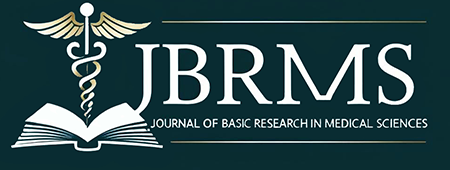Volume 10, Issue 3 (6-2023)
jbrms 2023, 10(3): 39-50 |
Back to browse issues page
Download citation:
BibTeX | RIS | EndNote | Medlars | ProCite | Reference Manager | RefWorks
Send citation to:



BibTeX | RIS | EndNote | Medlars | ProCite | Reference Manager | RefWorks
Send citation to:
Taeid V, Rahmati M, Fathi M, Hadi F. Association Between the Frequency of rs4680 COMT Polymorphism in Elite Iranian Male Athletes: An Experimental and In Silico Study. jbrms 2023; 10 (3) :39-50
URL: http://jbrms.medilam.ac.ir/article-1-783-en.html
URL: http://jbrms.medilam.ac.ir/article-1-783-en.html
Department of Physical Education, Faculty of Literature and Humanities, Lorestan University, Lorestan, Iran , rahmati.mas@lu.ac.ir
Abstract: (2020 Views)
Introduction: The COMT gene, with its influence on motivation, emotions, stress tolerance, self-control, pain processing, perception, and neurodegeneration, may underpin variations in sports competition outcomes. Thus, this study aims to explore the frequency of the COMT gene rs4680 polymorphism in elite Iranian male athletes in the domains of basketball and wrestling.
Materials & Methods: A total of 60 wrestlers, 55 basketball players, and 60 non-athletes were included as subjects. Saliva samples were used for DNA extraction, and the Tetra ARMS PCR method was employed for genotype determination. The impact of mutations on mRNA second structure and COMT gene function was assessed using RNAsnp and PolyPhen-2 servers, respectively. SPSS22 software facilitated data analysis, with the chi-square test applied to evaluate genotype frequency.
Results: The study did not reveal any association between the COMT rs4680 polymorphism and elite wrestlers and basketball players. Significant differences in genotype distributions or allele frequencies were not observed among (1) wrestlers and basketball players; (2) wrestlers and non-athletes; (3) basketball players and non-athletes. However, further replication studies are warranted (P < 0.05).
Conclusion: No significant association was identified between the COMT rs4680 polymorphism and the elite status of wrestlers and basketball players in the studied population. Nevertheless, additional replication studies are imperative for a comprehensive understanding of these relationships.
Materials & Methods: A total of 60 wrestlers, 55 basketball players, and 60 non-athletes were included as subjects. Saliva samples were used for DNA extraction, and the Tetra ARMS PCR method was employed for genotype determination. The impact of mutations on mRNA second structure and COMT gene function was assessed using RNAsnp and PolyPhen-2 servers, respectively. SPSS22 software facilitated data analysis, with the chi-square test applied to evaluate genotype frequency.
Results: The study did not reveal any association between the COMT rs4680 polymorphism and elite wrestlers and basketball players. Significant differences in genotype distributions or allele frequencies were not observed among (1) wrestlers and basketball players; (2) wrestlers and non-athletes; (3) basketball players and non-athletes. However, further replication studies are warranted (P < 0.05).
Conclusion: No significant association was identified between the COMT rs4680 polymorphism and the elite status of wrestlers and basketball players in the studied population. Nevertheless, additional replication studies are imperative for a comprehensive understanding of these relationships.
Type of Study: Research |
Subject:
Physiology
Received: 2023/10/30 | Accepted: 2023/12/7 | Published: 2023/06/25
Received: 2023/10/30 | Accepted: 2023/12/7 | Published: 2023/06/25
References
1. Ahmetov II, Fedotovskaya ON. Sports genomics: Current state of knowledge and future directions. Cell Mol Exerc Physiol. 2012;1(1):e1. DOI: 10.7457/cmep.v1i1.e1.
2. Ríos DCZ, Mata AJ, Matrinez J, Manozca AJ. Genetic variability of the CKM gene and sports performance. In International Conference of Sports Science-AESA. 2023. DOI: 10.30472/aesa-conf.v7i1.
3. De Moor MH, Spector TD, Cherkas LF, Falchi M, Hottenga JJ, Boomsma DI, et al. Genome-wide linkage scan for athlete status in 700 British female DZ twin pairs. Twin Res Hum Genet. 2007;10(6):812-820. DOI: 10.1375/twin.10.6.812
4. Zmijewski P, Leońska-Duniec A. Association between the FTO A/T Polymorphism and Elite Athlete Status in Caucasian Swimmers. Genes. 2021;12(5):715. DOI: 10.3390/genes12050715.
5. Abe D, Doi H, Asai T, Kimora M, Wada T, Takahashi Y, et al. Association between COMT Val158Met polymorphism and competition results of competitive swimmers. J Sports Sci. 2018;36(4):393-397. DOI: 10.1080/02640414.2017.1309058.
6. McAuley AB, Baker J, Johnston K, Varley I, Herbert AJ, Suraci B, et al. Talent inclusion and genetic testing in sport: A practitioner’s guide. Curr Issues Sport Sci (CISS). 2023;8(1):008-008. DOI: 10.36950/2023.1ciss008.
7. Cordeiro L, Rabelo PCR, Moraes MM, Teixeira-Coelho F, Coimbra CC, Wanner SP, et al. Physical exercise-induced fatigue: the role of serotonergic and dopaminergic systems. Braz J Med Biol Res. 2017;50:e6432. DOI: 10.1590/1414-431X20176432.
8. Humińska-Lisowska K, Chmielowiec K, Strońska-Pluta A, Chmielowiec J, Suchanecka A, Masiak J, et al. Epigenetic Analysis of the Dopamine Transporter Gene DAT1 with a Focus on Personality Traits in Athletes. Int J Mol Sci. 2023;24(10):8931. DOI: 10.3390/ijms24108931.
9. Lee CG, Moon H, Park S. The effects of dopamine receptor genes on the trajectories of sport participation from adolescence through young adulthood. Ann Hum Biol. 2020;47(3):256-262. DOI: 10.1080/03014460.2020.1736629.
10. Taeid V, Rahmati M, Fathi M, Hadi F. Examining the Frequency of COMT Gene rs4680 Polymorphism Iranian Male and Female Elite Combat Athletes. J Isfahan Med Sch. 2023;41(705):9-17. DOI: 10.48305/jims.v41.i705.0009.
11. Humińska-Lisowska K, Chmielowiec K, Chmielowiec J, Strońska-Pluta A, Bojarczuk A, Dzitkowska-Zabielska M, et al. Association Between the rs4680 Polymorphism of the COMT Gene and Personality Traits among Combat Sports Athletes. J Hum Kinet. 2023;89. DOI: 10.5114/jhk/168789.
12. Bastos P, Gomes T, Ribeiro L. Catechol-O-methyltransferase (COMT): An update on its role in cancer, neurological and cardiovascular diseases. Rev Physiol Biochem Pharmacol. 2017;173:1-39. DOI: 10.1007/112_2017.
13. Weinshilboum RM, Otterness DM, Szumlanski CL. Methylation pharmacogenetics: catechol O-methyltransferase, thiopurine methyltransferase, and histamine N-methyltransferase. Annu Rev Pharmacol Toxicol. 1999;39(1):19-52. DOI: 10.1146/annurev.pharmtox.39.1.19.
14. Rutherford K, Alphandery E, McMillan A, Daggeti V, Parsom WW, et al. The V108M mutation decreases the structural stability of catechol O-methyltransferase. Biochim Biophys Acta (BBA) - Proteins Proteomics. 2008;1784(7-8):1098-1105. DOI: 10.1016/j.bbapap.2008.04.006.
15. Machoy-Mokrzyńska A, Starzyneska-Sadura Z, Dziedzijko V, Safranov K, Kurzawski M, Leznicka K, et al. Association of COMT gene variability with pain intensity in patients after total hip replacement. Scand J Clin Lab Invest. 2019;79(3):202-207. DOI: 10.1080/00365513.2019.1576920.
16. Ng J, Barra S, Waddington S, Kurian MA. Gene Therapy for Dopamine Dyshomeostasis: From Parkinson's to Primary Neurotransmitter Diseases. Mov Disord. 2023. DOI: 10.1002/mds.29416.
17. Leźnicka K, Niewczas M, Kurzawski M, Cięszczyk P, Safranow K, Ligocka M, et al. The association between COMT rs4680 and OPRM1 rs1799971 polymorphisms and temperamental traits in combat athletes. Pers Individ Dif. 2018;124:105-110. DOI: 10.1016/j.paid.2017.12.008.
18. Sellami M, Elrayess MA, Puce L, Bragazzi NL, et al. Molecular big data in sports sciences: state-of-art and future prospects of OMICS-based sports sciences. Front Mol Biosci. 2022;8:815410. DOI: 10.3389/fmolb.2021.815410.
19. Nogueira NGdHM, Bacelar MFB, Ferreira BDPP, Parma JP, Lage GM. Association between the catechol-O-methyltransferase (COMT) Val158Met polymorphism and motor behavior in healthy adults: A study review. Brain Res Bull. 2019. DOI: 10.1016/j.brainresbull.2018.11.002.
20. Leźnicka K. Polymorphisms of catechol-O-methyltransferase (COMT rs4680: G> A) and μ-opioid receptor (OPRM1 rs1799971: A> G) in relation to pain perception in combat athletes. Biol Sport. 2017;34(3):295-301. DOI: 10.5114/biolsport.2017.66824.
21. de Castro-Catala M, Barrantes-Vidal N, Sheinbaum T, Moreno-Fortuny A, Kwapil TR, Rosa A. COMT-by-sex interaction effect on psychosis proneness. BioMed Res Int. 2015. DOI: 10.1155/2015/829237.
22. Tartar JL, Cabrera D, Knafo S, Thomas JD, Antonio J, Peacock CA. The “warrior” COMT Val/Met genotype occurs in greater frequencies in mixed martial arts fighters relative to controls. J Sports Sci Med. 2020;19(1):38.
23. Stroth S, Reinhardt RK, Thöne J, Hille K, Schneider M, Härtel S, et al. Impact of aerobic exercise training on cognitive functions and affect associated to the COMT polymorphism in young adults. Neurobiol Learn Mem. 2010;94(3):364-372. DOI: 10.1016/j.nlm.2010.08.003.
24. Bilder RM, Volavka J, Lachman HM, Grace AA. The catechol-O-methyltransferase polymorphism: Relations to the tonic–phasic dopamine hypothesis and neuropsychiatric phenotypes. Neuropsychopharmacology. 2004;29(11):1943-1961. DOI: 10.1038/sj.npp.1300542.
25. van Breda K, Collins M, Stein DJ, Rauch L. The COMT val158met polymorphism in ultra-endurance athletes. Physiol Behav. 2015;151:279-283. DOI: 10.1016/j.physbeh.2015.07.039.
26. Sutoo E, Akiyama K. Regulation of brain function by exercise. Neurobiol Dis. 2003;13(1):1-14. DOI: 10.1016/S0969-9961(03)00030-5.
27. Foley TE, Fleshner M. Neuroplasticity of dopamine circuits after exercise: implications for central fatigue. Neuromolecular Med. 2008;10:67-80. DOI: 10.1007/s12017-008-8032-3.
28. Balthazar CH, Leite LHR, Ribeiro RMM, Soares DD, Coimbra CC. Effects of blockade of central dopamine D1 and D2 receptors on thermoregulation, metabolic rate and running performance. Pharmacol Rep. 2010;62(1):54-61. DOI: 10.1016/S1734-1140(10)70242-5.
Send email to the article author
| Rights and permissions | |
 |
This work is licensed under a Creative Commons Attribution-NonCommercial 4.0 International License. |





